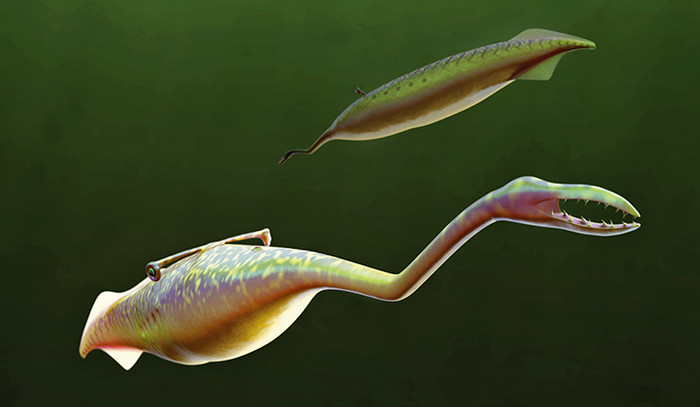Tully Monster mystery solved: 300-million-year-old creature was a vertebrate

More than 50 years after its discovery, scientists have figured out what kind of animal the famous Tully Monster actually was. For decades, mystery surrounded this strange pre-historical specie which lived more than 300 millions years ago. After incorrectly categorising it as a soft-bodied invertebrate, researchers have used innovative methods which reveal that the Tully Monster was in fact a vertebrate fish. The complete results of their investigation are published in the journal Nature.
Science fiction creature
The Tully Monster was discovered in 1958, when amateur paleontologist Francis Tully came across the fossil of a strange, aquatic creature previously unknown to man, in Illinois, USA. It looked like it came straight out of a sci-fi movie, with a tube-shaped body up to a foot long, skinny snouts, numerous teeth and eyes at the end of short stalks made it look more monster than animal. For this reason, it quickly became known as the Tully Monster. Many more similar fossils have since been discovered.
For years, scientists tried to understand what is was, how it lived, and how it came to be on this planet, but analysing the fossils have proved particularly difficult. "Basically, nobody knew what it was," explains Derek Briggs, co-author of the study. "The fossils are not easy to interpret, and they vary quite a bit. Some people thought it might be this bizarre, swimming mollusc. We decided to throw every possible analytical technique at it."
New techniques

The Field Museum in Chicago allowed scientists to use their collection of 2,000 Tully Monster specimens to conduct new, in depth analysis. Briggs and colleagues first examined in detail the morphological features displayed by the different fossils.
However, for the first time, they also resorted to an innovative analytical technique, synchrotron elemental mapping. The idea is to map the chemistry within a fossil to illuminate some of its physical aspect.
Two new features of the Tully Monster were identified that way. The team explained that the animal had gills and a notochord, a rudimentary spinal cord. Because it had big eyes and many teeth, the scientists also believe it was a predator.
"The monsters are related to the jawless fishes that are still around today by a unique combination of traits, including primitive gills, rows of teeth, and traces of a notochord, the flexible rod-like structure along the back that's present in chordate animals, including vertebrates like us", points out Paul Mayer, The Field Museum's Fossil Invertebrates Collections Manager.
This a breakthrough to understand the biology of these pre-historical mysterious creatures. Yet, many questions still remain unanswered, and will probably never be. It is for example impossible to know, at least at the moment, when the Tully Monster first appeared on Earth or when, it became extinct.
© Copyright IBTimes 2025. All rights reserved.






















